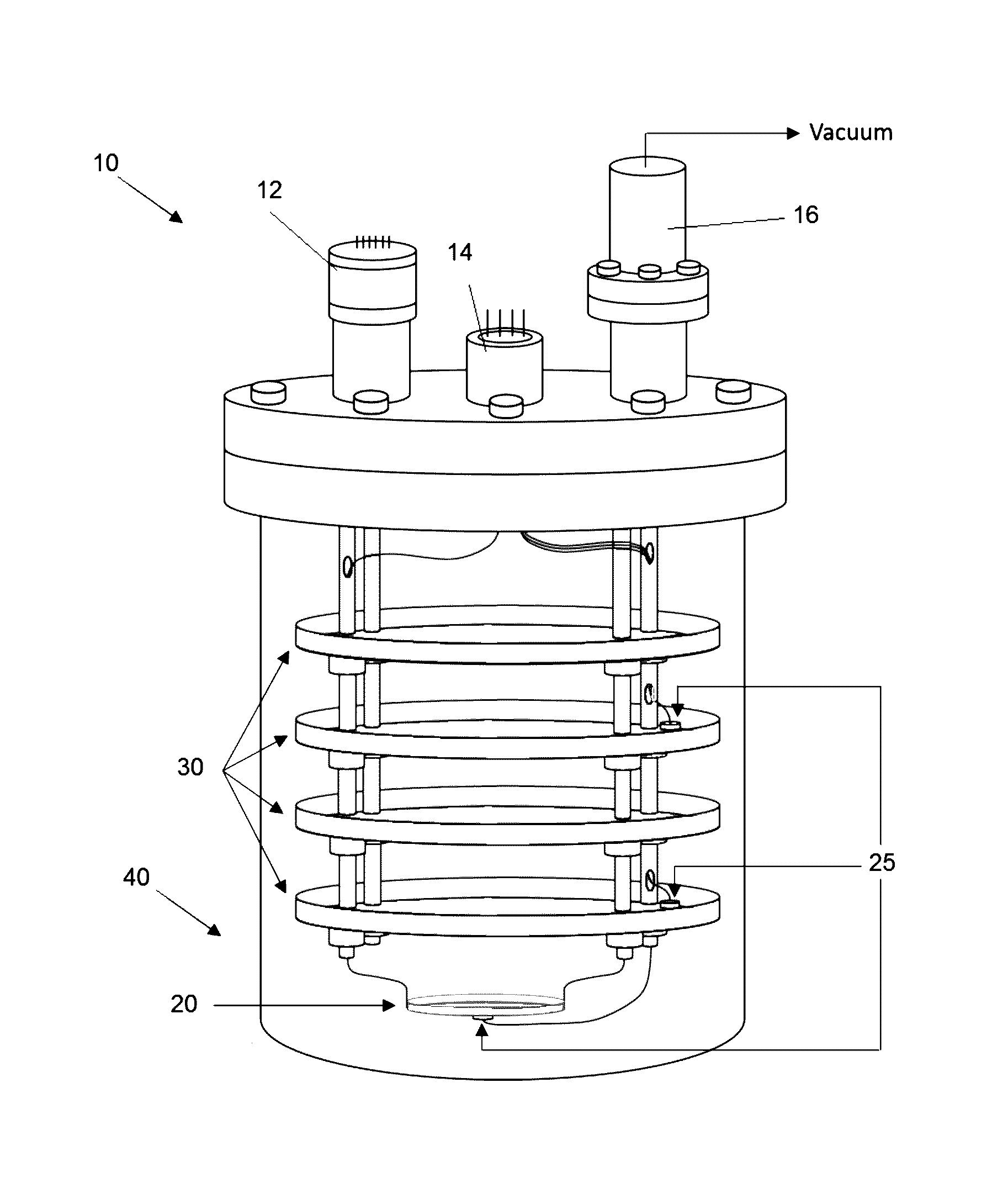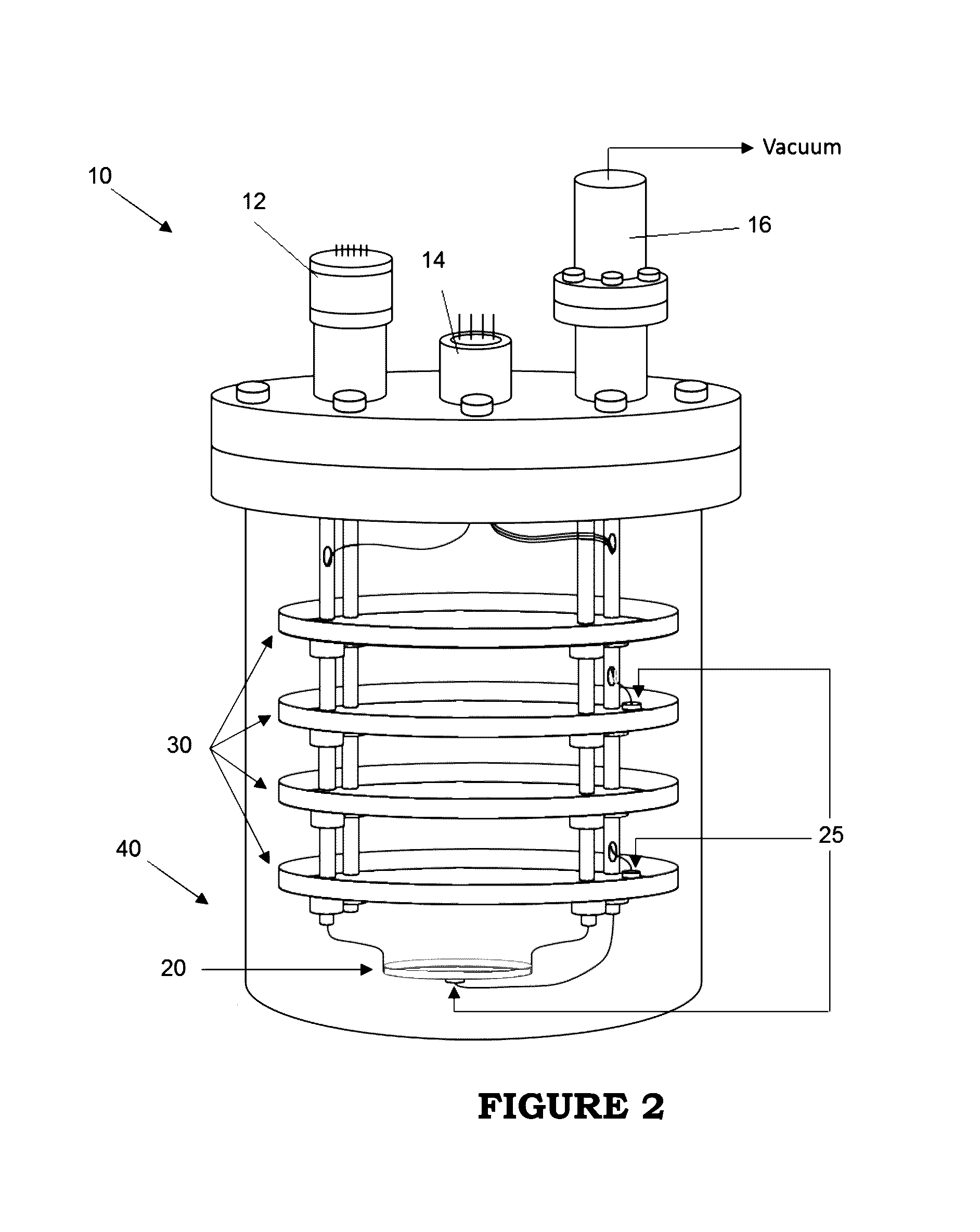Self-assembled organic monolayer hybrid materials and methods thereof
a hybrid material and organic technology, applied in the direction of electrolytic capacitors, light-sensitive devices, coatings, etc., can solve the problems of difficult control of monolayer formation, long deposition time, incomplete surface hydroxyl functionalization, etc., to increase the passivation of metal oxide substrates, rapid and direct electron transfer, high efficiency
- Summary
- Abstract
- Description
- Claims
- Application Information
AI Technical Summary
Benefits of technology
Problems solved by technology
Method used
Image
Examples
example 1
Synthesis and Functionalized Carboxylate Deposition
Synthesis of M1 Dye
[0171]
[0172]As illustrated in Scheme 1 below, 4-dimethylaminobenzaldehyde (1, 1.5 g, 10 mmol), methyl cyanoacetate (1.2 g, 12 mmol), and piperidine (0.1 g, 1.2 mmol) were dissolved in 20 mL ethanol and refluxed for 2 h to form the intermediate 2; methyl-(2Z)-2-cyano-3-[4-(dimethylamino)phenyl]prop-2-enoate, as a light yellow colored precipitate. The precipitate was collected via vacuum filtration and washed with ethanol. The crude precipitate was used for the next reaction without purification and characterization.
[0173]The intermediate 2 was then hydrolyzed in 5% KOH in ethanol (10 mL) by refluxing for 2 h. The reaction mixture was diluted by water and the solution pH was adjusted to 6 by adding 10% HCl at room temperature to form a yellow colored precipitate. The precipitate was then collected by vacuum filtration and washed with ethanol. The precipitate was then purified by column chromatography (with a 5:95 he...
example 2
Comparison of Chromatographic Efficiency
[0210]The behavior of methyl violet (MV) on untreated silicon-oxide thin-layer chromatography (TLC) slides were tested against TLC slides treated with cyanoacetic acid via a solution dipping process and the molecular vapor deposition process, designated FCD, as described in Example 1. MV was spotted onto the slides and the slides were developed in 7% methanol in chloroform. The slides were then removed from the mobile phase and visually analyzed for chromatographic efficiency as depicted in FIG. 8 wherein the dashed line represents the solvent front. The TLC slide treated by FCD, shown as C in FIG. 8, displayed a dramatically improved separation efficiency, 2100 theoretical plates, as compared to the untreated TLC plate, shown as A in FIG. 8, and the TLC plate treated by the solution dipping process, approximately 36 theoretical plates each, shown as B in FIG. 8.
[0211]The behavior of methyl violet (MV) on untreated silicon-dioxide was tested a...
PUM
| Property | Measurement | Unit |
|---|---|---|
| TG | aaaaa | aaaaa |
| TG | aaaaa | aaaaa |
| temperature | aaaaa | aaaaa |
Abstract
Description
Claims
Application Information
 Login to View More
Login to View More - R&D
- Intellectual Property
- Life Sciences
- Materials
- Tech Scout
- Unparalleled Data Quality
- Higher Quality Content
- 60% Fewer Hallucinations
Browse by: Latest US Patents, China's latest patents, Technical Efficacy Thesaurus, Application Domain, Technology Topic, Popular Technical Reports.
© 2025 PatSnap. All rights reserved.Legal|Privacy policy|Modern Slavery Act Transparency Statement|Sitemap|About US| Contact US: help@patsnap.com



